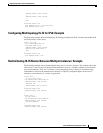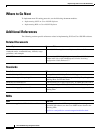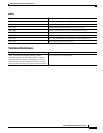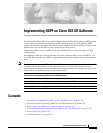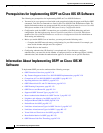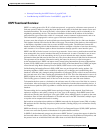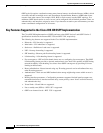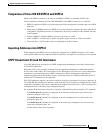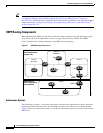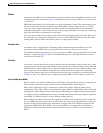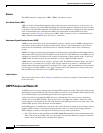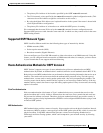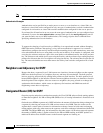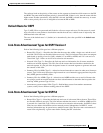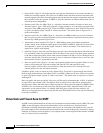
Implementing OSPF on Cisco IOS XR Software
Information About Implementing OSPF on Cisco IOS XR Software
RC-131
Cisco IOS XR Routing Configuration Guide
Comparison of Cisco IOS XR OSPFv3 and OSPFv2
Much of the OSPFv3 protocol is the same as in OSPFv2. OSPFv3 is described in RFC 2740.
The key differences between the Cisco IOS XR OSPFv3 and OSPFv2 protocols are as follows:
• OSPFv3 expands on OSPFv2 to provide support for IPv6 routing prefixes and the larger size of IPv6
addresses.
• When using an NBMA interface in OSPFv3, users must manually configure the router with the list
of neighbors. Neighboring routers are identified by the link local address of the attached interface
of the neighbor.
• Unlike in OSPFv2, multiple OSPFv3 processes can be run on a link.
• LSAs in OSPFv3 are expressed as “prefix and prefix length” instead of “address and mask.”
• The router ID is a 32-bit number with no relationship to an IPv6 address.
Importing Addresses into OSPFv3
When importing into OSPFv3 the set of addresses configured on an OSPFv3 interface, users cannot
select specific addresses to be imported. Either all addresses are imported or no addresses are imported.
OSPF Hierarchical CLI and CLI Inheritance
Cisco IOS XR software introduces new OSPF configuration fundamentals consisting of hierarchical
CLI and CLI inheritance.
Hierarchical CLI is the grouping of related network component information at defined hierarchical
levels such as at the router, area, and interface levels. Hierarchical CLI allows for easier configuration,
maintenance, and troubleshooting of OSPF configurations. When configuration commands are
displayed together in their hierarchical context, visual inspections are simplified. Hierarchical CLI is
intrinsic for CLI inheritance to be supported.
With CLI inheritance support, you need not explicitly configure a parameter for an area or interface. In
Cisco IOS XR, the parameters of interfaces in the same area can be exclusively configured with a single
command, or parameter values can be inherited from a higher hierarchical level—such as from the area
configuration level or the router ospf configuration levels.
For example, the hello interval value for an interface is determined by this precedence “IF” statement:
If the hello interval command is configured at the interface configuration level, then use the
interface configured value, else
If the hello interval command is configured at the area configuration level, then use the area
configured value, else
If the hello interval command is configured at the router ospf configuration level, then use the
router ospf configured value, else
Use the default value of the command.



